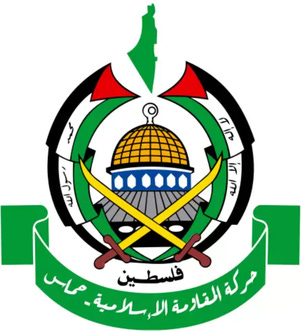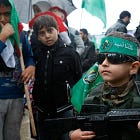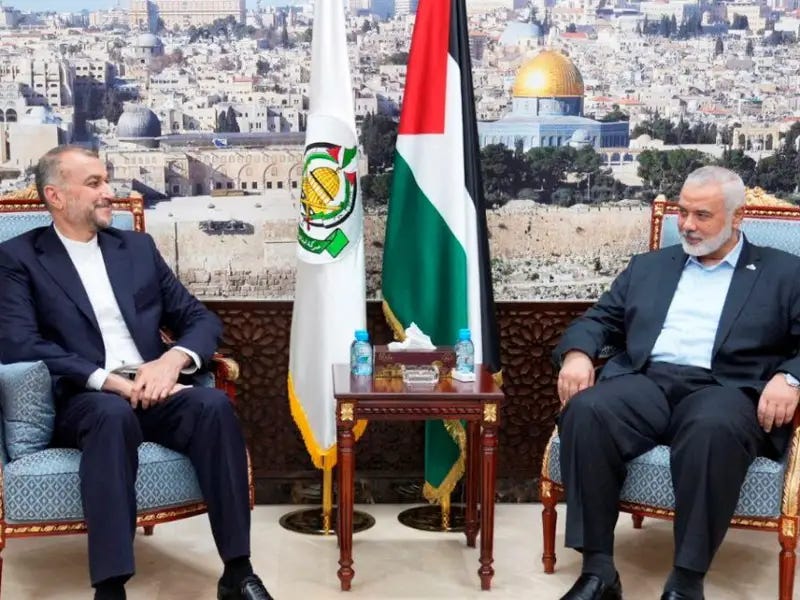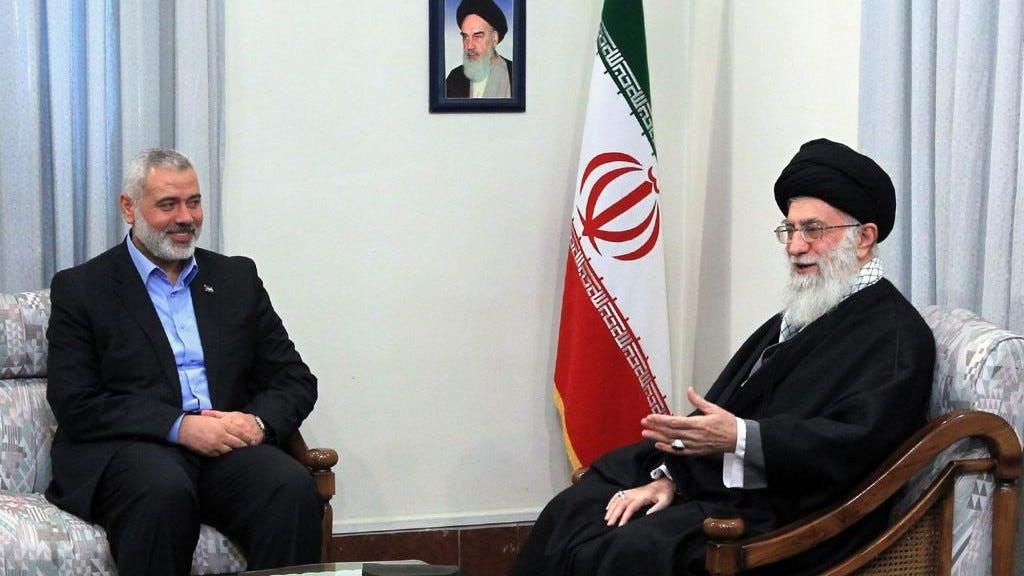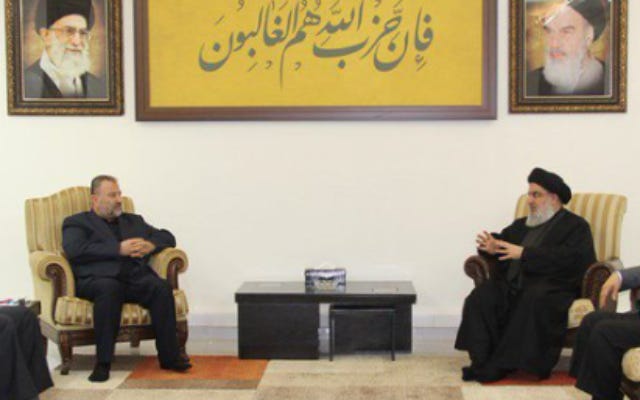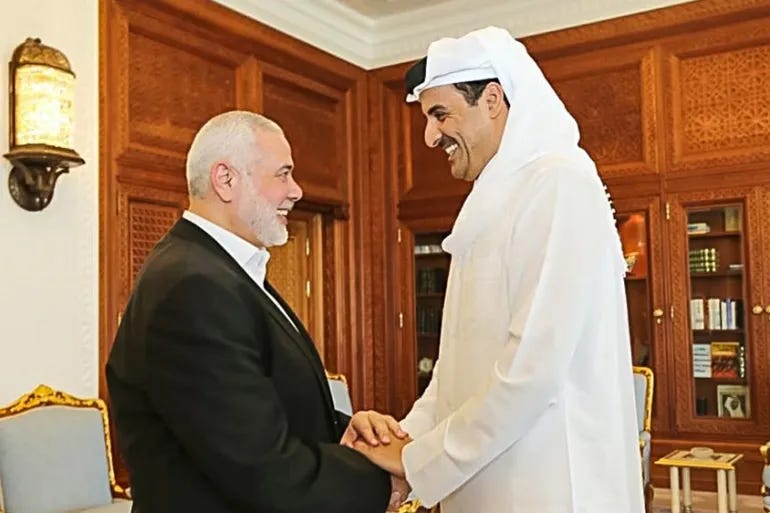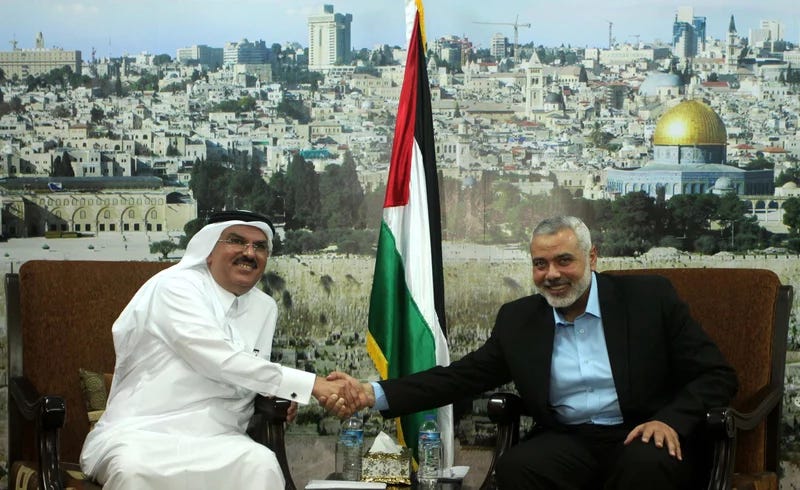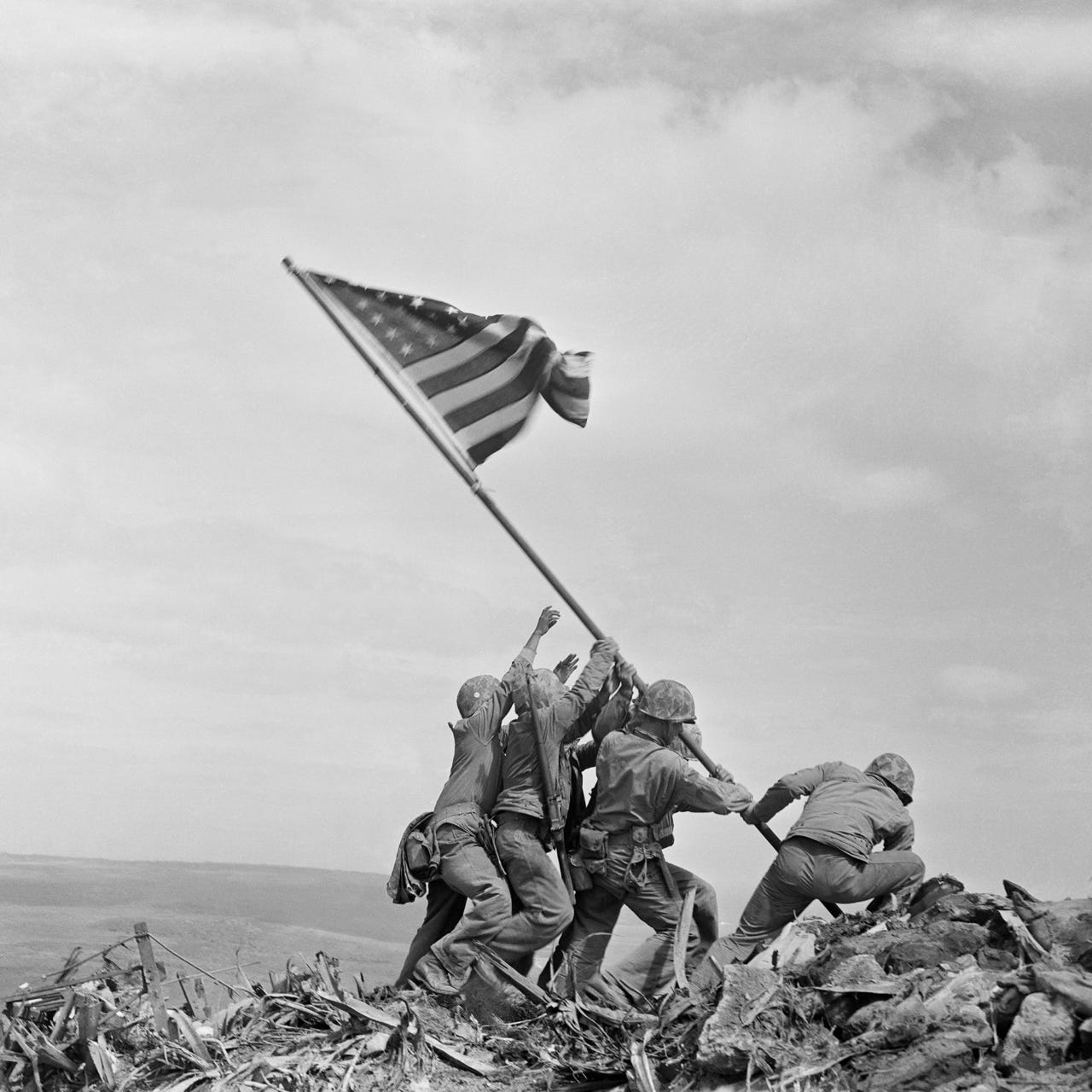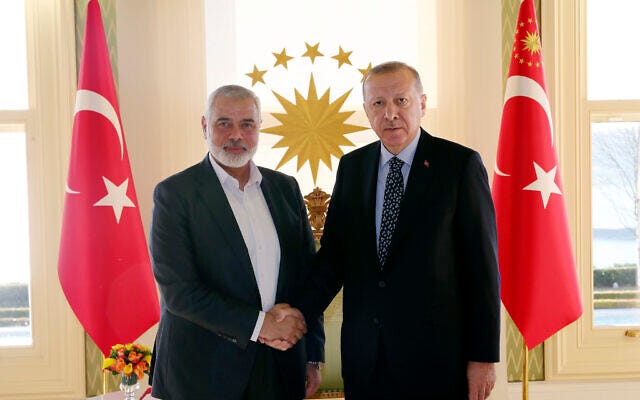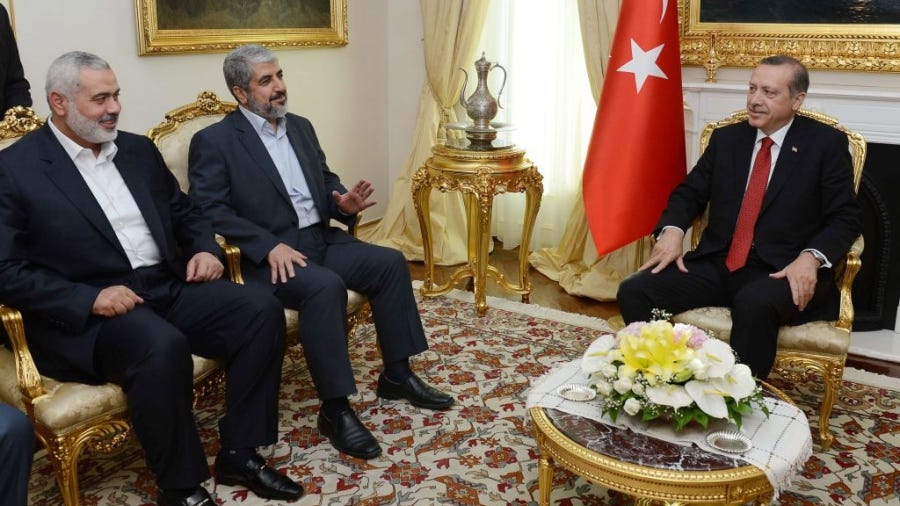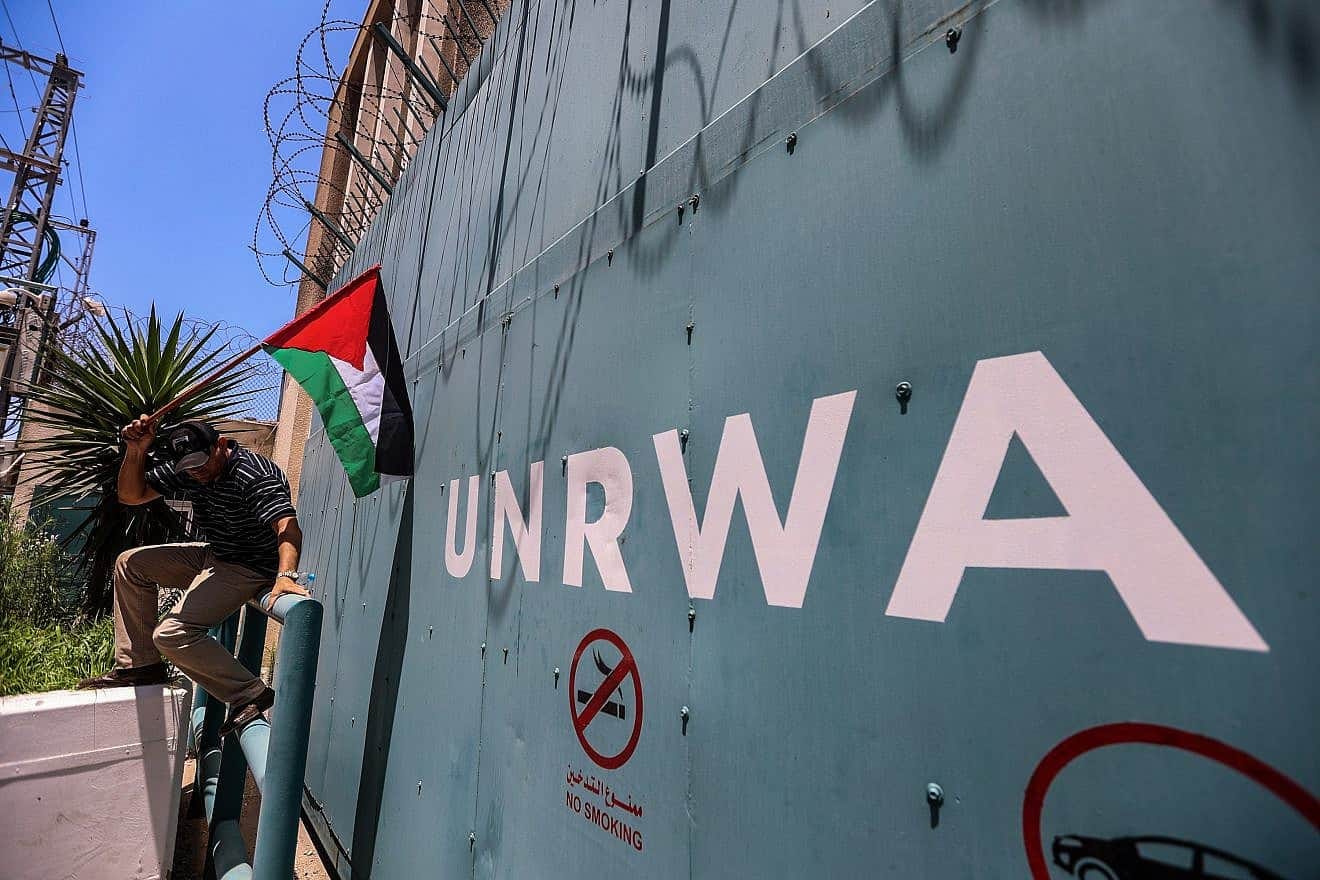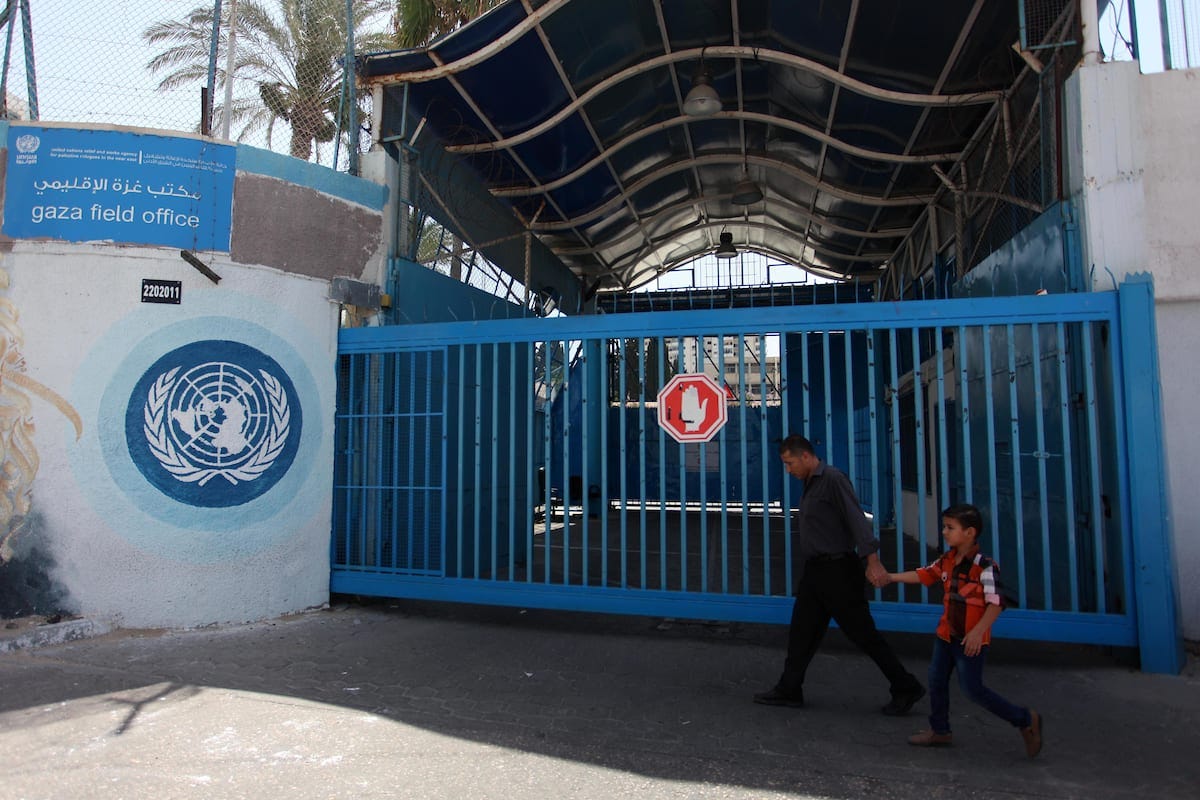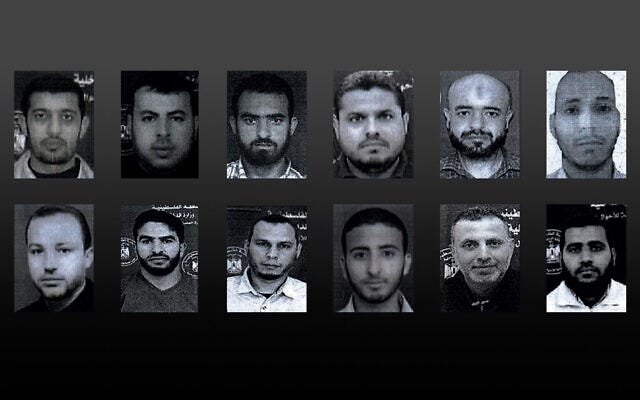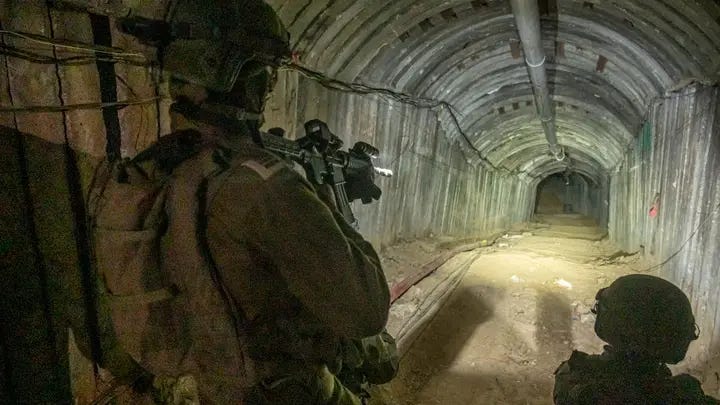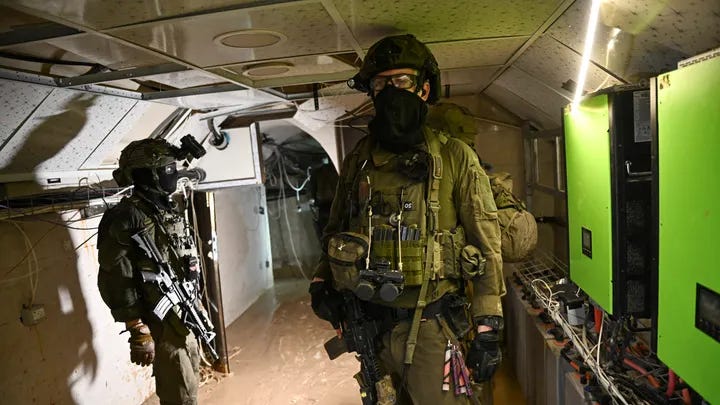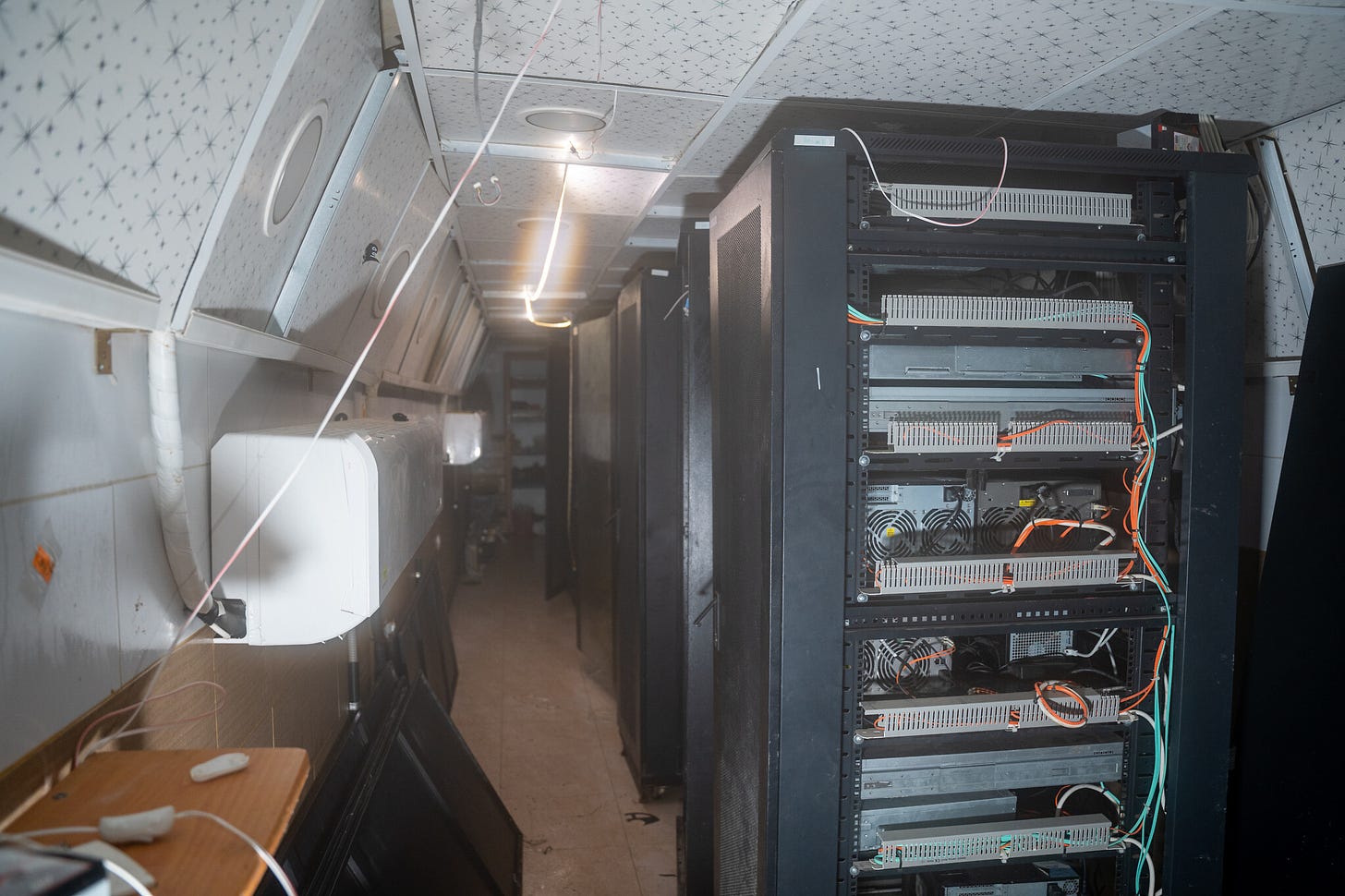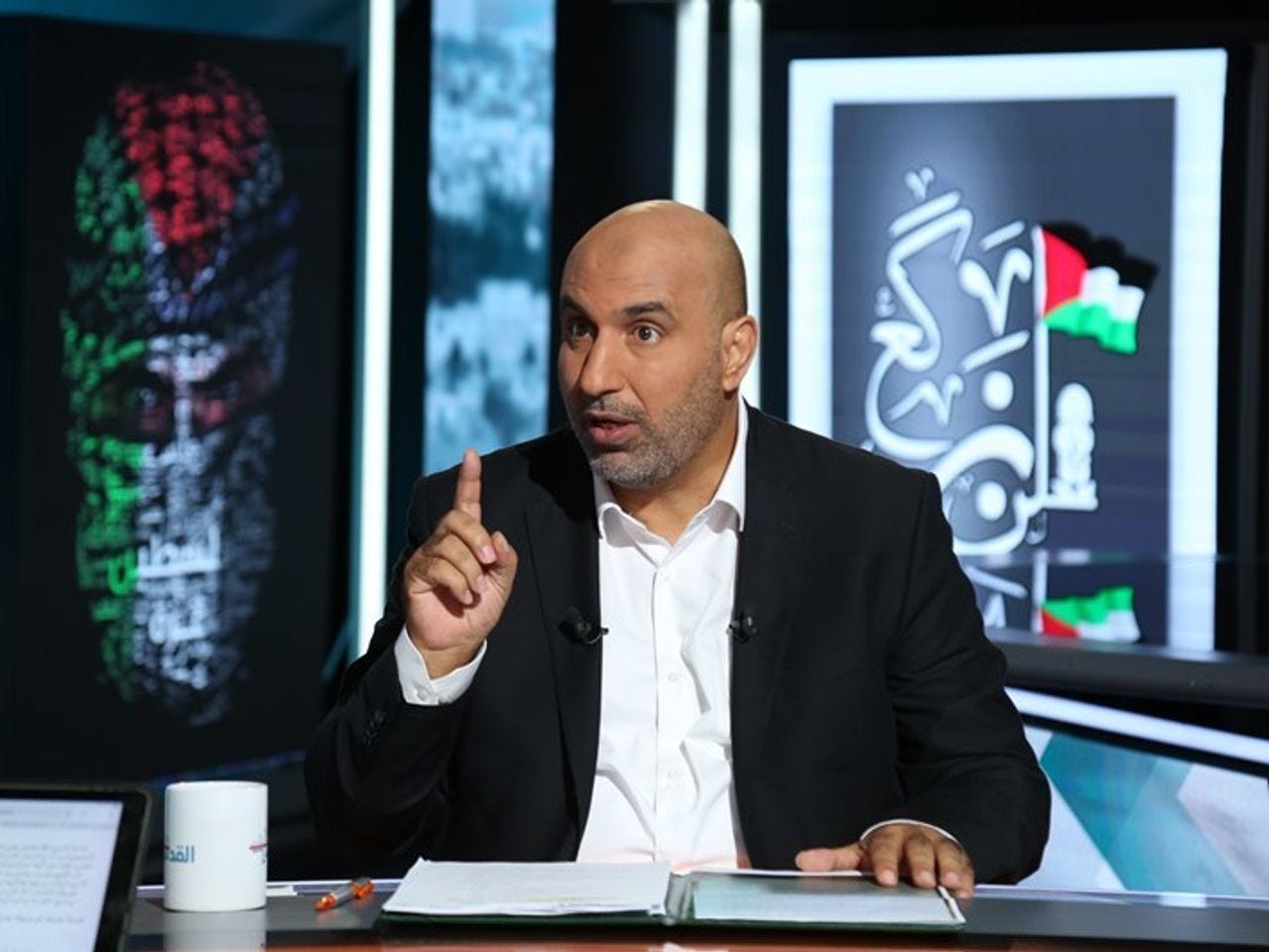In my last episode I continued my view of Operation Swords of Iron, the Israeli response to the horrific massacre of October 7, 2023. Today, in my last post in this series, I will examine the countries and organizations that support Hamas both financially and militarily. If you would like to read the last episode please click below.
The Hamas Support System
As a designated terrorist entity, Hamas is cut off from official assistance that the United States and European Union (EU) provide to the Palestinian Authority (PA) in the West Bank. Historically, Palestinian expatriates and private donors in the Persian Gulf provided much of the funding for Hamas. However, in the last two decades Iran, Qatar and Turkey have become the most important sources of funding for Hamas.
Hamas and Iran
Iranian support for Hamas began in 1992 when a conference was held in Tehran as part of an effort to undermine US peace efforts initiated at the Madrid Conference in 1990. Iran pledged to provide Hamas military training and $30 million annually. In 1992, after 418 Hamas fighters were deported to Lebanon, the Islamic Revolutionary Guard Corps (IRGC) and Hezbollah taught them how to build and use suicide bombs, afterwhich, Iran began providing Hamas $50 million annually. During the Second Intifada, Iran used Hezbollah to smuggle weapons to Hamas and promised $250 million in aid. The relationship between Sunni Hamas and and Shia Iran has always been a marriage of convenience produced by shared interests on the ground, rather than affinity with Tehran’s political interpretation of Islam. As a result, the groups are constantly adjusting their external relations according to their own strategic calculations.
During Operation Cast Lead, in 2008, Iran increased their aid to Hamas, including supplying more advanced rockets. After Hamas “declared victory” at the conclusion of Cast Lead, Hamas leader Khaled Mashal said:
“The victory of the people of Gaza was a miracle of God, and the Islamic Republic definitely has a share in this victory.”
Weapons, including the Fajr-5 rocket with a range of 50 miles, (long enough to hit Tel Aviv), and manufacturing materials were smuggled into Gaza by sea and through tunnels from Egypt. Iran denied it supplied the rockets, but Mashal said, “Iran has given us all the support. The whole world knows the weapons used by resistance come mostly from Iran or are purchased with Iranian funding.”
In the wake of the Arab Spring in 2011, relations between Iran and Hamas deteriorated, after Hamas expressed support for the Syrian opposition and backed the Saudis in their war against the Houthis in Yemen. The flow of arms and money, $23 million a year at that point, stopped. It would be six years before high-level meetings between Iran and Hamas would happen.
At the beginning of August 2017, a senior delegation from the Political Bureau of Hamas visited Tehran. It was led by Ezzat al-Resheq, Saleh al-Arouri, Zaher Jabarin, and Osama Hamdan. The delegation was responding to an Iranian invitation to Ismail Haniyeh, to take part in the inauguration ceremony for the second term of President Hassan Rouhani. The group met with senior Iranian figures including Foreign Minister Mohammad Javad Zarif and Ali Akbar Velayati, the special political adviser on foreign relations to Supreme Leader Ali Khamenei, along with officials of the IRGC.
On August 6, 2017, Ali Baraka, Hamas’ representative in Lebanon, said that relations between Hamas and Iran had been restored and that the two sides had agreed not to delve into past issues that had clouded their relations. Instead, they would look ahead and cooperate on behalf of the Palestinian interest so as to prevent “the negation of the Palestinian problem” amid the regional circumstances. Baraka added that Ismail Haniyeh would soon be visiting Iran and:
“Iran is aware of the steadfastness of the resistance, and the role Hamas plays in it. Just as Hamas recognizes that relations with Iran strengthen the Palestinian resistance, especially because Iran is the only country that supports the resistance with money and weapons.”
At the end of August 2017, Yahya Sinwar, said that after years of tension between Iran and Hamas over the war in Syria, relations between the two had been restored and he termed them “excellent.” According to Sinwar, this would have a positive effect on the efforts of the resistance to liberate Palestine and destroy Israel. Sinwar stressed that Hamas was “continuing to prepare its members for the task of liberating Palestine…and the Islamic Republic of Iran is playing a central role toward achieving this objective with financial and military assistance and the training of Hamas’ military wing.” He described Iran’s assistance as “strategic” in fighting the “Israeli occupation,” but added that Hamas is not interested (at present) in a war with Israel. However, Sinwar stressed, Hamas “does not fear a war and is prepared for it.”
On September 6, 2017, a meeting took place between the Iran-Palestine and Lebanon Parliamentary Friendship Group Chairman, Amir Khojasteh, and their representative in Tehran, Khaled Qadoumi. Khojasteh named Palestine as the most important issue facing the Muslim world. He urged Palestinian groups to realize that armed resistance and unity are the only way to fight “the Zionist regime” and that peace negotiations were futile. He promised that the friendship group would provide all the needed assistance to the Palestinian people and their resistance. A statement issued by Hamas says that the participation of the high-level delegation signifies appreciation for:
“the tremendous Iranian role in assisting the steadfastness of the Palestinian people, supporting its rights and the right to resist, and underlines Hamas’ desire to strengthen and develop the relationship with Iran on the way to solving the Palestinian problem.”
By May 2018, Sinwar said Hamas had improved its military capability with the help of Iran and described relations with the IRGC and the commander of its elite Quds Force, Qasem Soleimani, as “strong and warm.” He added that Iran provided the Izz Al-Din Al-Qassam Brigades and other Gaza factions “a lot of money, equipment, and expertise.” He also stated that Hamas had “excellent” relations with Hezbollah and that there is coordination on an “almost daily” basis between the two organizations.
In July 2018, Iranian Islamic Revolutionary Guards General Gholamhossein Gheybparvar told the Gaza-based terror groups, that Iran would provide money and weapons so long as they were committed to the jihad against the Great Satan (the US) and the Little Satan (Israel).
In December 2018, Ali Baraka said that Iran was the only country that helped Hamas recover from the war in 2014 and that Iran’s financial support is the “basis for the steadfastness of the resistance in Gaza. Sinwar publicly thanked Iran on May 30, 2019, for providing rockets it used to strike deep into Israel. Sinwar was referring to the period between May 3, and May 6, 2019, where Hamas launched 700 rockets into Israel. He said:
“Iran provided us with rockets, and we surprised the world, when our resistance targeted Beersheba. Had it not been for Iran, the resistance in Palestine would not have possessed its current capabilities.”
In August 2019, Israeli television reported that Iran offered Hamas $30 million per month in exchange for intelligence on Israeli missile capabilities.
In 2020, in his long-awaited visit to Iran, Ismail Haniyeh delivered a eulogy at the funeral of Qasem Soleimani, the IRGC commander killed by the US. He called Soleimani a “Martyr of Jerusalem” and said that the assistance Soleimani provided, “brought Hamas to the position they are in today in terms of power and steadfastness.” He also met with senior Iranian officials including Supreme Leader Ali Khamenei.
In January 2021, IRGC Aerospace Force commander Amir Ali Hajizadeh stated, “All the missiles you might see in Gaza and Lebanon were created with Iran’s support. Between May 10, and May 18, Hamas and PIJ bombarded Israel with 4,340 rockets and Haniyeh said Iran:
“did not hold back with money, weapons, and technical support.”
Similarly, Sinwar said, “If it wasn’t for Iran’s support, we would not have had these capabilities.”
In January 2022, Haniyeh denied that Hamas was fighting a proxy war for Iran, saying they were confronting a common enemy. He did acknowledge that Hamas had received $70 million to help develop missiles and defense systems.
A few days after October 7, Yahya Rahim Safavi, an adviser to Iran's Supreme Leader Ali Khamenei, congratulated Hamas on the attack, saying that Iran "will stand by the Palestinian fighters until the liberation of Palestine and Jerusalem." Iran's Foreign Ministry said at the time that the attack by Hamas shows that the Palestinians "have security measures against Israel." However, a Wall Street Journal report published the day after the attack, suggested that IRGC Quds Force personnel were directly involved in its planning. According to sources in Hamas and Hezbollah, representatives from both groups have met in Beirut once every two weeks with members of the Quds Force. According to the report, Quds Force Commander Esmail Qaani, Hezbollah Secretary General Hassan Nasrallah, Palestinian Islamic Jihad Deputy General Secretary Ziad al-Nakhla, as well as the Deputy Chairman of Hamas' Political Bureau Salah al-Arouri, also participated in some of the meetings.
Hamas and Hezbollah
Hezbollah and Hamas have long been close allies, overlooking their religious differences, (Hamas is Sunni and Hezbollah is Shite), in their lust to destroy Israel. Before the Arab Spring in 2011, the two cooperated politically and militarily and were closely aligned with Iran and Syria. After the Syrian uprising devolved into a civil war, Hamas would break with the Assad regime, as well as Hezbollah and Iran. The initial signs of a rift appeared in the first half of 2012, when Khaled Mashal started openly criticizing the Assad regime for its military repression of the Syrian opposition. Eventually, when the conflict escalated, Hamas moved its political bureau from Damascus (where it had been located since 1999) to Doha, Qatar. Hamas’ decision to break with Syria was mainly linked to developments in Egypt. Ultimately, it was the rise of former Egyptian president Mohamed Morsi and the Muslim Brotherhood that pushed Hamas to sever its relations with Iran, Syria, and Hezbollah. The Egyptian Muslim Brotherhood is Hamas’s ideological parent organization, and Hamas strongly believed it would benefit politically and economically from the Muslim Brotherhood’s ascent to power in Egypt. Hamas hoped that a close alliance with the Muslim Brotherhood would increase its international legitimacy and end Gaza’s economic and political isolation. Following Hamas’s split with Iran and Hezbollah, cooperation between the two groups reached its low point. While low-level contacts continued, the two sides publicly criticized each other for the breakup. Hezbollah, however, diligently maintained a direct unofficial link with the Hamas military wing and its commanders, Muhammad Deif and Yahya Sinwar, despite the rift created by Khaled Mashal in 2011 over the Syrian issue.
In July 2013, President Morsi, was overthrown in a military coup. This abrupt change of government was followed by a crackdown on the Muslim Brotherhood, which left Hamas with its back against the wall and overtures were made to resume cooperation with Hezbollah. It was a slow process but by June of 2017, Deputy Chairman of the Political Bureau of Hamas, Salah al-Arouri, along with a few dozen Hamas operatives had settled in the Dahiya neighborhood of Beirut, a Hezbollah stronghold. Hezbollah also coordinated the movement of military-wing operatives from Gaza to Iran for training. Al-Arouri was setting up a branch of Hamas in Lebanon that would be attached and subordinate to Hezbollah headquarters. In addition to coordinating Hamas’ activity in the Palestinian refugee camps in Lebanon, it appeared that al-Aruri would be directing the activity of Hamas’ military wing in the Gaza Strip in partnership with Hezbollah. On October 31, 2017, in Beirut, Hezbollah leader Hassan Nasrallah and al-Arouri, discussed the two terror organizations’ need for cooperation against Israel.
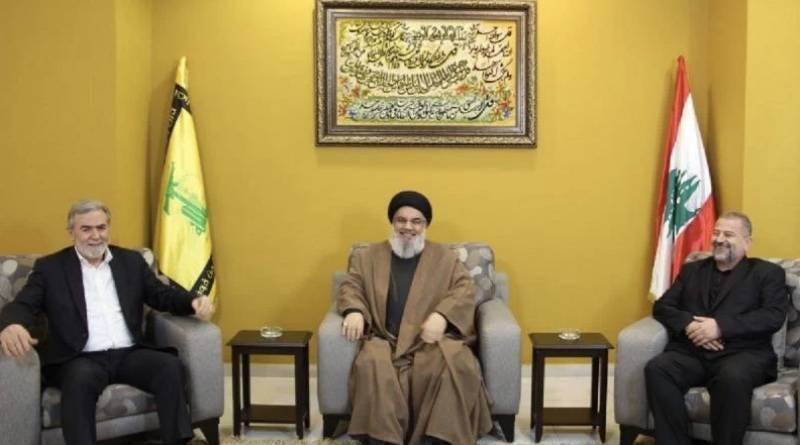
Saleh al-Arouri had been coordinating the buildup of the organization’s military capabilities in Lebanon with the approval of Hezbollah and Iran. Hamas reportedly has several hundred members in the Palestinian refugee camps in Lebanon and is receiving help from Iran to manufacture rockets and drones.
During Operation Guardian of the Walls, a joint operations post was established in Beirut by the IRGC, Hezbollah, and Hamas. Yahya Sinwar and al-Arouri coordinated a handful of rocket attacks from Lebanon during the fighting.
On November 3, 2023, Hassan Nasrallah, the leader of Hezbollah, said in a long-anticipated speech in Beirut, that Al-Aqsa flood, the official Hamas term for the October 7, massacre was a heroic operation and "we are ready for all possibilities," he warned that "those who want to prevent a regional war must quickly stop the aggression in Gaza." He then said that Israel is committing "acts of genocide" and that "America is completely responsible for the current war in Gaza and Israel is just its tool."
The Qatar Connection
Besides Iran, Qatar is the principal financial backer of Hamas. The relationship between Hamas and Qatar strengthened in 2008 and 2009 when Khaled Mashal was invited to attend the Doha Summit, where he was seated next to the then Qatari Emir Hamad bin Khalifa al-Thani. During the summit, al-Thani pledged $250 million to repair the damage caused by Israel in Gaza. Qatar was then considered to be, along with Iran, the main backers of Hamas. It also led Ismail Haniyeh, to thank Qatar for their "unconditional" support. In 2012, al-Thani, became the first head of state to visit Gaza under Hamas rule and pledged to raise $400 million for reconstruction in Gaza. By 2014 Qatar was giving Hamas political, material, humanitarian and charitable support. To maintain calm and improve the economic conditions in Gaza, Israel allowed Qatar to deliver $30 million monthly, to Gaza, sometimes in suitcases full of cash. Qatar has pumped an estimated $1.8 billion into Hamas-run Gaza since then. In January 2021, Qatar pledged $360 million of annual support to Gaza, in part to subsidize government salaries. About a third of Qatari support is in the form of oil that Hamas authorities sell for cash.
Qatar, of course, denies that the money given to Gaza is specifically for Hamas, during a 2015 visit to Gaza, Qatari official Mohammad al-Emadi stated that Qatar is using the money not to help Hamas, but rather the Palestinian people as a whole. He acknowledged however, that giving anything to the Palestinian people means using Hamas as the local conduit. Emadi said, "You have to support them. You don't like them, but they control the country, you know.” However, those words ring hollow when one looks at the number and status of Hamas members that live in the Gulf kingdom.
Qatar also plays hosts Ismail Haniyeh, Khalil al-Hayya, head of Hamas’s communications office, and Khaled Mashal, Hamas’ former political chief and current head of the group’s diaspora office, as well as many other Hamas members. In 2012, Mashal opened a Hamas political office in Doha and before long, moved most of their operations there. Senior Hamas officials live in luxury in the Gulf monarchy, and have full freedom of movement in the country. Before the Gaza War began, the United States and Israel believed it was “preferable to have Hamas’s leaders somewhere they can be monitored rather than somewhere, such as Iran, where they can’t.”
“We have built relations with Hamas in order to maintain peace and stability in the region,” said Qatari Prime Minister Mohammed bin Abdel Rahman al-Thani in November 2023. Yet contrary to the belief that Qatar could moderate Hamas and help stabilize the region, Doha’s support for Hamas has facilitated relentless violence. Under Qatari patronage, Hamas has fought five separate wars against Israel (2008, 2012, 2014, 2021, and 2023). On October 7, Hamas launched the deadliest assault on Jews since the Holocaust, killing 1,200 Israelis, and Hamas leadership has remained in the lap of luxury in Doha, at the behest and under the protection of the regime.
After October 7, Qatar’s foreign ministry released a statement holding “Israel alone responsible” for Hamas’s bloody rampage. The ministry ignored Hamas’ war crimes and accused Israel of violating international law. On October 24, after failing to condemn the attacks, Emir of Qatar, Sheikh Tamim bin Hamad al-Thani, said that “it is untenable for Israel to be given an unconditional green light and free license to kill.”
Al Jazeera
Another way the Qatar supports Hamas is through the state-owned television station Al Jazeera. The Al Jazeera Media Network, which is funded by the Qatari royal family, insists it has editorial independence, but the network is widely seen by foreign governments as a soft-power tool for the Gulf monarchy. The network regularly lionizes the violent activities of Hamas, with particularly vitriolic coverage during clashes with Israel. In 2021, after Operation Guardian of the Walls (click below to read my post on that operation), Hamas gave the network a certificate of appreciation for its “exemplary coverage” of that conflict. Al Jazeera also aired a statement from Ismail
Haniyeh where he praised “the great triumph of Hamas” and his call for “the sons of this entire nation, in their various locations, to join this battle in any way they can.” On May 15, 2021, Al-Jazeera gave more air time to Haniyeh who said they were “trampling underfoot the theory of coexistence between the two people within the 1948 borders”. More jubilation was broadcast live on Al Jazeera on May 24, 2021, three days after the Operation Guardian of the Walls ceasefire came into effect, when the current leader of Hamas in the Gaza Strip, Yahya Sinwar embraced, then held aloft, a young boy dressed in military garb who was brandishing a submachine gun, while a colleague on the stage led the crowd in the chant “We will trample on the heads of the Jews in front of everyone.” Al Jazeera’s coverage isn’t just limited to actual Hamas press events. For years, Yusuf Qaradawi, the Muslim Brotherhood cleric who blessed the tactic of suicide bombings, hosted a program on the channel and Al Jazeera’s reporting has previously drawn accusations of inciting terrorism from the governments of Saudi Arabia, Egypt, the United Arab Emirates and Bahrain.
After the October 7, attacks the network broadcast Hamas military chief, Mohammad Deif’s call to arms and regularly parrots Hamas talking points. They state, with no qualification, the Gaza Health Ministry causality figures, which are widely seen as completely false. It is so bad that US Secretary of State, Antony Blinken, has asked Qatar to moderate Al-Jazeera’s coverage of the war against Hamas. The Biden administration is concerned that the channel is inflaming public opinion and heightening the risks of a wider conflict. Recently the Israeli government agreed to emergency measures that would lead to the closure of Al Jazeera’s office in Israel, on the grounds that their broadcasts promote Hamas and amount to “incitement”. The matter still must be given final approval by the security cabinet.
Hamas and Turkey
Hamas first established a presence in Turkey in 2011 at the direct invitation of the Turkish government. Since then, Turkey has provided a safe haven for senior Hamas leadership. Saleh al-Arouri, former deputy political chief, relocated from Damascus to Turkey following the outbreak of the Syrian civil war, and established a Hamas branch there. One senior Israeli intelligence official described him as “one of the most important leaders of Hamas, involved in everything from organizing the group's finances to logistics”. Arouri had even attended meetings with President Recep Tayyip Erdogan and is an honored guest at many state functions.
But Arouri is not alone in Turkey, in 2011, Israel released ten Hamas operatives to Turkey as part of the Gilad Shalit prisoner exchange. Since then, Hamas men have come and gone, but one thing is clear. The Hamas members who remain in Turkey are active. They attend local universities, join Turkish organizations, and play a role in its politics, and also appear to travel freely into and out of the country.
In 2015, Jihad Yaghmour, a Hamas operative who played a role in the abduction of IDF soldier Nahshon Waxman, became the Hamas representative to the Turkish government. Yaghmour liaises between Hamas and the Turkish government and the Turkish National Intelligence Organization. Erdogan openly takes meetings with senior Hamas leadership, most recently in July 2023, when he hosted Hamas political chief Ismail Haniyeh. Ankara granted Haniyeh and Arouri Turkish citizenship in 2020, along with at least eleven other Hamas members. Turkish passport holders are entitled to visa-free travel to Japan, South Korea, Singapore and Serbia among other countries and Turkey is working to secure similar rights to enter EU countries. This allows the Hamas terrorists greater opportunity to threaten Israelis in other parts of the world.
Israel has been upset by Turkish support for Hamas and Erdogan’s willingness to allow these men to live in the country and make plans to attack Israel from Turkey. And for good reason, the Mossad disclosed in 2022, that Hamas operatives in Istanbul were planning attacks, including an assassination plot against the mayor of Jerusalem.
Erdogan's support for Hamas is ideological; his Justice and Development Party (AKP) identifies with the Muslim Brotherhood, but his support is also politically strategic. He uses the Palestinian cause as a tool to gain votes among conservative Turks, and also to gain regional clout among pro-Palestinian sympathizers across the Middle East. Turkey also supports Hamas financially, having given Hamas over $300 million since 2012, and militarily. SADAT, a private Turkish military contractor, led by an Islamist general with close ties to Erdogan, is responsible for supplying Hamas with weapons and materiel. In July 2023, Israeli authorities seized 16 tons of explosives that originated in Turkey and were bound for Gaza where they were intended for Hamas rockets.
In 2022, Israeli relations with Turkey began to improve; however, Israel conditioned a return of its ambassador to Istanbul and a return to normalcy and the expulsion of Hamas terrorists. The latter condition was later dropped and Irit Lillian, Israeli’s charge d’affaires in Ankara since January 2021, was formally recognized as Israel’s ambassador in December 2022.
However, following the October 7, massacre, President Recep Tayyip Erdogan said “Hamas is not a terrorist organization but a liberation group, mujahideen waging a battle to protect its lands and people.” Erdogan also refused to acknowledge the war crimes Hamas committed that day. At a pro-Hamas rally on October 28, Erdogan called Israel’s defensive actions in the Gaza Strip a “massacre” and said that Turkey is preparing to “tell the whole world that Israel is a war criminal.” He also appeared to threaten military action against Israel, saying that Turkey can “come at any night unexpectedly.” On November 15, Erdogan called Israel a “terror state” and accused Israel of committing “the most treacherous attacks in human history.”
Since October 7, Turkish officials, including Erdogan and Foreign Minister Hakan Fidan, have openly met with their Iranian counterparts to coordinate an anti-Israel response. A meeting on November 1, resulted in both officials advocating for “peace” while threatening Israel with a broader regional war.
UNRWA
The United Nations Relief and Works Agency (UNRWA) is the organization which has been providing food, medicine, and social services to the Palestinian people for 74 years. While the refugees benefit from UNRWA, the organization benefits more from the refugees. These refugees are the organization’s reason for existence. Accordingly, UNRWA has zero incentive to resolve the Palestinian refugee problem, since ending the refugee problem would render the agency obsolete. The interests of the refugees and UNRWA are so intertwined that UNRWA is staffed mainly by local Palestinians, more than 23,000 of them, with only about 100 international United Nations professionals. While the UN High Commission on Refugees (UNHCR) and UNICEF (United Nations International Children’s Fund) avoid employing locals who are also recipients of agency services, UNRWA does not make this distinction.
UNRWA also does not seem to have a problem with the Islamist agenda of Hamas. It did not condemned the brutal Hamas violence that enabled the terrorist group to take the Gaza Strip by force in June 2007. UNRWA just waited to see who would win the battle, then immediately indicated to Hamas that it was eager to get back to providing its services. UNRWA workers are permitted to openly affiliate with terrorist groups. As long as UNRWA employees are members of Fatah, the PFLP, or Hamas, they are going to pursue the interests of their party within the framework of their job. And who is supposed to monitor that unlawful activity does not happen under the UNRWA auspices? UNRWA is, but the people doing the checking are also the people doing the bad things. It is the old axiom of letting the fox watch the hen house.
Since many UNRWA teachers are alumni of the UNRWA school system, they perpetuate the vitriolic curriculum they were taught, vilifying Israel and the West. For example, Suheil al-Hindi, an UNRWA teachers’ representative, openly applauded suicide bombings when teaching at a school in the Jabaliya refugee camp in Gaza in 2003. Instead of a condemnation, al-Hindi received a promotion and was subsequently elected to UNRWA’s clerks union.
UNRWA teachers who publicly identify with radical groups have created a teachers’ bloc that ensures the election of Hamas members and other individuals committed to Islamist ideologies. After using their classrooms as a place to refine their radical messages, these teachers gravitate to politics. As such, UNRWA’s education system has become a springboard for Hamas leaders. For example, Said Sayyam, the Hamas minister of interior and civil affairs, was a teacher in UNRWA schools in Gaza from 1980 to 2003. He went on to become a member of UNRWA’s Arab Employees Union, and headed the teachers sector committee. Other notable graduates of the UNRWA school system include Hamas Prime Minister Ismail Haniyeh, and Abd al-Aziz Rantisi, the former Hamas chief who attended UNRWA secondary school in Khan Younis and graduated top of his class.
UNRWA also appears to be in the business of cultivating new terrorists. The New York Times exposed in 2000 that UNRWA allowed terrorist groups to use their schools as “summer camps” so that 25,000 Palestinian children could receive paramilitary training, including instructions on how to prepare Molotov cocktails and roadside bombs.
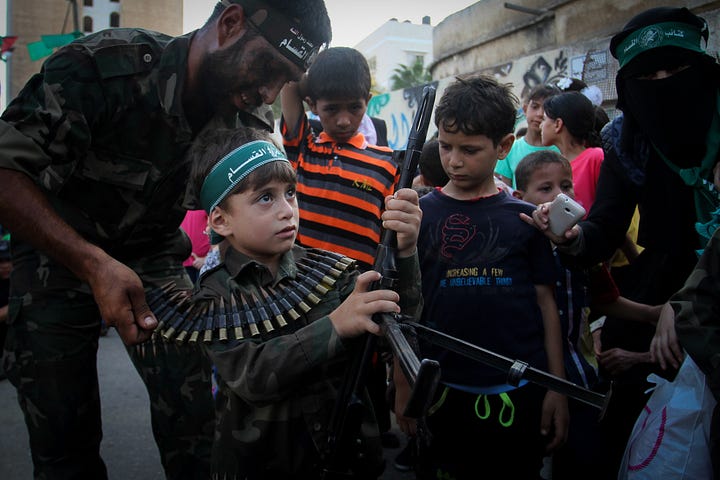
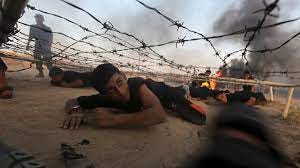

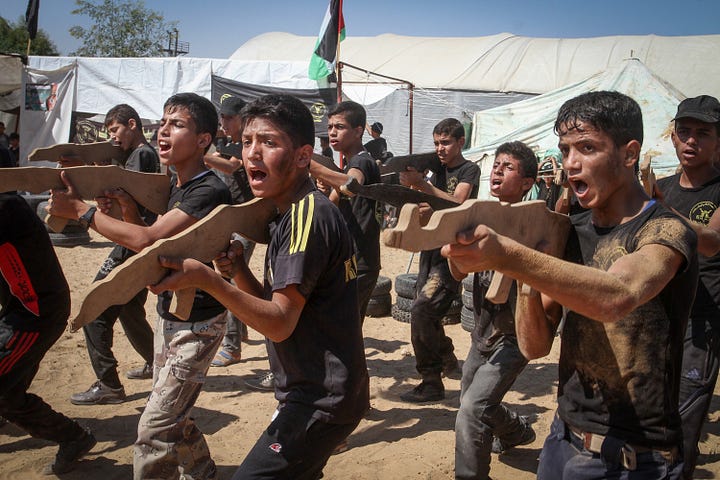
There have also been widespread reports of terrorism from UNRWA-supervised facilities, including sniper attacks from UNRWA-run schools, bomb and arms factories in UNRWA camps, the transport of terrorists to their target zones in UNRWA ambulances, and even UNRWA employees directly tied to terrorist attacks against civilians. Nidal Abd al-Fattah Abdallah Nazzal, an ambulance driver for UNRWA from Kalqiliya in the West Bank, was arrested by Israeli security services in August 2002. Nidal admitted that he was a Hamas activist and that he had transported weapons and explosives to terrorists in his ambulance, taking advantage of the freedom of movement afforded to UNRWA vehicles by the Israelis. In May 2022, UNRWA teacher Elham Mansour, posted this on Facebook: “By Allah, anyone who can kill and slaughter any Zionist and Israeli criminal, and doesn’t do so, doesn’t deserve to live. Kill them and pursue them everywhere, they are the greatest enemy. All Israel deserves is death.”
After the October 7, 2023, attacks it only became more evident that UNRWA was completely enmeshed with Hamas. On January 10, 2024, a Telegram chat group of 3,000 UNRWA teachers came to light. It is replete with messages, photos and videos celebrating the Hamas massacre of October 7, mixed with discussions by the educators about when to expect their next UNRWA salaries, as if the massacre was just another mundane activity.
When Safaa Mohammad Al Najjar, a highly active administrator in the group, is not sharing charts of 1,750 UNRWA teachers, she’s praising terrorism against Jews. On the morning of October 7, at 7:33 am, Al Najjar excitedly celebrated the Hamas massacre. Sharing video footage of the attacks, she exclaimed, “Resistance on the roof of settlers’ houses,” and she added a red heart emoji. She praised the Hamas “Mujahideen” as they massacred, mutilated and raped Israelis. One might wonder how she came by the video footage so quickly, and the logical answer is that she knew the terrorist committing these barbaric acts.
On the morning of October 7th, administrator Israa Abdul Kareem Mezher, posting under the username “Sun of Sunshine”, ecstatically celebrated the Hamas terrorists: “May Allah keep their feet steady and guide their aim”; “pray for the Mujahidin”; “Allah protect them and bring them back safe.” At 7:38 AM, as news of the Hamas atrocities began to spread, Mezher cheered, “God is the greatest God.” When a group member wondered what these “heroes” were “brought up on,” Mezher replied: “They imbibed Jihad and resistance with their mothers’ milk.” A few days later, this UNRWA teacher endorsed a call for Hamas to execute their Israeli hostages, sharing a statement by Hamas spokesman Abu Obaida. It appears that at least 25 other UNRWA teachers in the chat group celebrated Jihadi terrorism and the murder of Jews.
Another active administrator of the group, is UNRWA English teacher Abdallah Mehjaz, who according to his LinkedIn profile, previously worked for the BBC. On October 13, he posted a message from the Hamas Interior Ministry, urging Gazans to stay put and ignore Israeli messages calling on them to evacuate for their safety. In other words, an UNRWA teacher was doing Hamas' work urging Gaza civilians not to leave harm's way, and instead to effectively serve as human shields.
Unfortunately, the news gets worse for UNRWA, it wasn’t just teachers posting things online, it was UNRWA employees committing actual acts of terrorism. In January 2024, Israeli officials notified the UN that they had evidence of at twelve UNRWA employees what were involved in the attacks on October 7.
The New York Times provided a dossier with the details of the allegations to the US government, and are behind the decision by UNRWA, to fire 12 workers and also prompted many countries, including the United States, to halt their funding for UNRWA. The report said that one UNRWA school counselor from Khan Younis in southern Gaza is “accused of working with his son to abduct a woman from Israel.” Furthermore, “a social worker from Nuseirat, in central Gaza, is accused of helping to bring the body of a dead Israeli soldier to Gaza, as well as distributing ammunition and coordinating vehicles on the day of the attack,” the report added. A third employee was “described as taking part in the massacre at Kibbutz Be’eri where 97 people died”.
Israel’s Channel 13 also reported that two of the Israeli hostages released from Gaza had testified that they were held in captivity separately by UNRWA workers, sometimes in their homes. In one case the hostage said they were told by the captor’s daughter that he was an UNRWA teacher, fed snacks labeled and distributed by the UN agency, and eventually moved from place to place through UNRWA facilities to avoid detection as Israeli troops closed in.
On February 11, 2024, Israel announced that they had discovered a tunnel system under UNRWA headquarters in Gaza City. UNRWA’s headquarters is located in the upscale Rimal neighborhood, an area that the IDF had previously operated in, destroyed the local Hamas battalion, and withdrawn from. At the time of the initial ground offensive in Gaza City, the military had not found or known much about the Hamas data center, but new intelligence, primarily emerging from the Shin Bet interrogations of captured terrorists, helped pinpoint where to dig.
Commander of the 401st Armored Brigade, Colonel Benny Aharon said “The IDF was here previously, the first time was to destroy the enemy, but when we were here the last time we collected a lot of intelligence documents. We had a basis of information, but not enough to be able to dig down 20 meters (66 feet), and find it, we needed a bit more. This information comes from prisoners we capture, from computers we find, from documents, and maps,”
Colonel Nissim Hazan, the 401st Brigade Operations Officer, said the IDF can now carry out raids with much smaller numbers of forces, for operations “that require much more research and much more time, and a lot more patience.” There is still a risk to these raids, with Aharon noting that two soldiers under his command had been killed during their operation to reach the Hamas data center. Major (res.) Yitzhar Hofman, a commander in the IAF’s elite Shaldag unit and Major David Shakuri, the Executive Officer of the Combat Engineering Corps’ 601st Battalion, both were killed by sniper fire.
Hazan, who is tasked with coordinating the brigade’s underground operations, said the main entrance to the tunnel was located under a UNRWA school in the area. However, it had been blocked off by Hamas by the time troops arrived. Instead, combat engineers dug down around 26 feet to find the shallowest part of the underground passage. After going through a twisting maze of tunnels and under the main UNRWA building, Colonel Hazan and his men found a room with several electrical closets, power inverters and dozens of off-grid industrial batteries and in the next room they found the Hamas intelligence servers. All the hard drives were removed for Israeli intelligence to examine.
The response from UNRWA officials has been less than believable, UNRWA Commissioner-General Philippe Lazzarini said that UNRWA officials were not aware of any Hamas tunnels under their headquarters. He added that staff left the headquarters on October 12, following an Israeli evacuation order, and that they were not aware of any activity that may have taken place there since. In times of no active conflict, he added, the agency inspects its premises every quarter. He added “UNRWA is a human development and humanitarian organisation that does not have the military and security expertise nor the capacity to undertake military inspections of what is or might be under its premises.”
However Colonel Aharon “There is no doubt that UNRWA staff knew that [Hamas] was digging a massive tunnel beneath them,” Aharon said. “There’s a perimeter wall, a gate, cameras, at the gate they log who comes in and out. Whoever worked at UNRWA knew very well who was coming in, and who they were covering for.”
How Hamas moves their money
Hamas uses a global financing network to funnel support from friendly nations, passing cash through Gaza tunnels or using cryptocurrencies to bypass international sanctions. Matthew Levitt, a former U.S. official specializing in counterterrorism, estimated the bulk of Hamas' budget of more than $300 million came from taxes on business, as well as from countries including Iran and Qatar. Hamas, sanctioned as a terrorist organization by the United States, Great Britain and other countries, had increasingly used cryptocurrencies, credit cards or contrived trade deals to avoid mounting international restrictions, Levitt said. After Operation Guardian of the Walls, Hamas-controlled crypto addresses received more than $400,000.
Whether through crypto or other means, Hamas' allies have found ways to get money to Gaza. Qatar's funding for Gaza actually passes through Israel. The funds are transferred electronically from Qatar to Israel and Israeli and UN officials hand-carry cash over the border to Gaza. The cash is distributed directly to needy families and public servants in Gaza and each family or individual must sign next to their name that they've received the cash. One copy of that sheet goes to Israel, one goes to the UN and one goes to Qatar. However, most products Palestinians buy are heavily taxed by Hamas, and it is unclear how much of the money ends up in the hands of Hamas.
As we have seen, Iran provides up to $100 million annually in support to Palestinian groups including Hamas. Hamas moves that money through shell companies, shipping transactions and precious metals. In May 2022, the US sanctioned a Hamas finance official, three Hamas financial facilitators, and six companies that have generated revenue for the terrorist group by managing an international investment portfolio. According to the Treasury Department, ”Hamas’ Investment Office, whose leadership oversees this network, held assets estimated to be worth more than $500 million, including companies operating in Sudan, Turkey, Saudi Arabia, Algeria, and the United Arab Emirates.”
In September 2019, the US Treasury Department announced sanctions against Turkey-based Zaher Jabarin, the head of the Hamas Finance Office, who manages the group’s budget and is “focused on developing a financial network in Turkey that would allow Hamas to raise, invest, and launder money before transferring it to Gaza and the West Bank.” Jabarin has also served as the primary point of contact between Hamas and the IRGC. The chief of the Palestinian Office of the IRGC in Lebanon, Muhammad Sa’id Izadi, was also sanctioned.
Assistant Secretary of the Treasury for Terrorist Financing and Financial Crimes Elizabeth Rosenberg said
“Today’s action targets the individuals and companies that Hamas uses to conceal and launder funds. Hamas has generated vast sums of revenue through its secret investment portfolio while destabilizing Gaza, which is facing harsh living and economic conditions. Hamas maintains a violent agenda that harms both Israelis and Palestinians. The United States is committed to denying Hamas the ability to generate and move funds and to holding Hamas accountable for its role in promoting and carrying out violence in the region.”
Matthew Levitt, of the Washington Institute says “One of the things that stands out from Treasury’s designations is that they all operate under the command of the Hamas political leadership, including Ismail Haniyeh. All of the Treasury designations make clear they answer to the political bureau that Haniyeh chairs.”
On January 4, 2024, the Wall Street Journal published a report on Zaher Jabarin. Jabarin, manages a portfolio worth hundreds of millions of dollars, crucial for the group’s operations against Israel. According to the WSJ report, Jabarin is a key figure in managing the financial relationship between Iran and Hamas, a role that involves overseeing the transfer of funds from Tehran to Gaza. He is even known as the CEO of Hamas and is responsible for a portfolio of companies and a network of private donors and businessmen that give Hamas a annual income in the area of $300 million. It was Jabarin that provided the money to buy weapons and pay the fighters that massacred innocent Israelis on October 7.
Despite potential military setbacks in Gaza, Israel remains concerned about the resilience of the Hamas financial network. Jabarin has successfully navigated through Western sanctions utilizing financial systems across several countries to funnel money into Gaza and as Jabarin continues to navigate the complex world of international finance and politics, the future financial stability of Hamas, amid ongoing sanctions and global scrutiny remain a subject of intense interest and concern.
I have an update on one of the Hamas officials mentioned in this post. On January 2, 2024, Saleh al-Arouri was killed in an Israeli airstrike targeted on his home in the Dahieh neighborhood of Beirut.
As we have seen the people and countries that finance Hamas and allow them to conduct terror operations against Israel are numerous and well-entrenched. It will be an uphill battle to stop their funding, with US “ally”, Qatar and NATO member, Turkey as two of the biggest supporters but it must be done. Hamas will never truly be defeated until it’s money dries up. That also go for Iran, Qatar and UNRWA, they will continue to cause trouble in the region as long as the United States is giving them money. Why should we support countries and organizations that do not share our beliefs and goals? I know I will probably never see a time that the US grows a pair and starts acting like a true world leader but I can hope that it happens soon.
Chris




